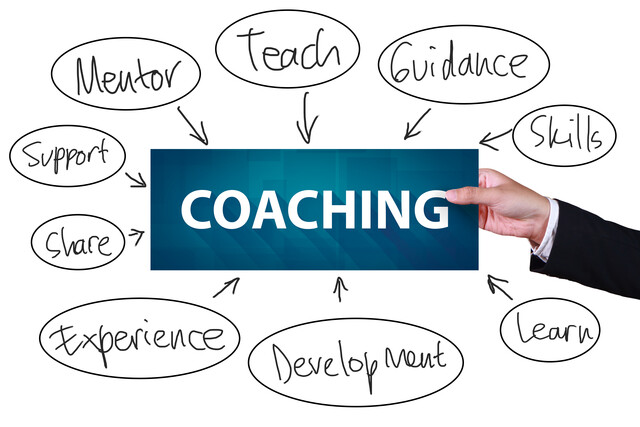Companies should consistently analyze the value they are providing to their customers and one important manner in which to do this is to solicit feedback from customers. Each contact with a customer provides an opportunity to gather data, but many companies do not avail themselves of this opportunity. In a Six Sigma implementation, the capture of data about customers' needs and definition of value is vitally important.
Errors and defects that significantly affect customers' view of the quality and value of a product should be evaluated immediately and they should become a part of the Six Sigma process improvement project currently being deployed. While this type of evaluation is often time consuming and may require some investment of funds, it is an essential component of becoming an organization that consistently meets the needs of its customers while being financially successful.
A company that is lean, or free of cumbersome bureaucracy, can rapidly respond to customer feedback. The business will be enabled to grow by satisfying the needs of new customers as well as meeting the needs of existing customers. This is the process of becoming a Customer or Market Driven Enterprise.
One of the first steps in making the transition from a traditional business model to a customer driven company is recognizing that a crisis is unfolding or is imminent. The crisis might be a dramatic reduction in sales, outmoded products, or any other situation where a company is no longer meeting the needs of its customers or the market. In such a crisis, changes must be made and the status quo must be rejected.
Making the Transition
Making the transition to a customer driven enterprise involves senior management asking themselves some very difficult questions:
- What is the company's purpose?
- What are the values of the company?
- What does such a company look like?
In this context, a value is a goal. Management must pursue the company's values, or goals, and clearly define its vision.
A New Approach
When a company becomes an enterprise that can consistently meet its customers' needs, it begins to take on certain characteristics.
Customer driven enterprises have fewer bureaucratic layers that separate the customer from senior management. In most traditional business models, the senior executives are at the top of an organizational chart, which lists the company's employees. In a customer driven company, the customer is at the top and there are as few layers of management as possible. In this model, every employee works for the customer, not management.
During the transition to this new model, management needs to be very effective and clear in communicating their values to the entire company. One method of doing this is to use "internal marketing." Companies usually think of marketing services and products to their customers only, but they must also market their values to their most important asset: their employees. But, it is also essential that all leaders' actions are in line with their words. The actions of management must reflect the company's values and set an example for all employees to follow. Credibility is very important in building trust among employees. Even a single instance of a manager's deviation from the company's goals can lead to the failure of the Six Sigma project. Statistics have shown that effective leaders will spend 50% of their time on communication.
The Board of Directors of a company will play a vital role in the deployment of a Six Sigma project. Management cannot put actions in place without their approval, but the board will not get involved in day-to-day operations. They will not oversee the project but they must approve its vision before it begins.
It is important that metrics (or measurements) are captured at all phases of a project. The right statistics need to be measured. Measuring the wrong things is just as useless as not measuring at all. Data must be made readily available and actionable, meaning that the data must be able to effectively show what needs to change in order to satisfy the customers' needs.
Many experts agree that rewards should not be given to employees who do their job well. This is counter-intuitive to most companies' compensation philosophy, but it is a vital component of a successful customer-driven enterprise. Bonuses should not be paid to employees who meet customers' needs because meeting customers' needs is an essential part of their job. Their regular compensation, which should be fair and based on market forces, should be the company's only financial obligation to its employees. But, rewarding exceptional efforts with group-based parties or other non-financial rewards are encouraged.
Customer Feedback
When a complaint is filed, two opportunities exist for a company: increase the customer's impression of the value of the service, or lose the customer's business.
A satisfied customer will usually not write letters to a company or tell their friends and colleagues about their experience. But, an unsatisfied customer will usually tell over 10 people about their dissatisfaction of a company's product or service. Every instance of a customer complaint is an opportunity to impress the customer and make them satisfied.
A Focus Group
One method that companies use to gather data is the use of focus groups. A focus group is a group of people who do not know each other but who share certain key characteristics. These characteristics are in line with the company's demographics. The age, gender, likes, dislikes, and many other factors go into selecting people to serve in a focus group and they are meant to simulate the company's core group of customers.
The main purpose of a focus group is to determine the group's impression of the company's product or service. In carefully planned but unscripted discussions, the focus group leaders can obtain valuable feedback that can be immediately incorporated into the company's vision. In a Six Sigma project, focus groups are often used at the beginning of a project to determine what needs to change in order for a company to meet its customers' expectations.
Noriaki Kano, one of the most respected business consultants who specialize in quality management, developed the Kano Model to explain how different levels of quality affect satisfaction. Six Sigma projects incorporate this model throughout their deployment.
Kano's model shows that customers expect, or they assume, a certain level of quality will exist in a product. After years of using certain products, they learn the attributes of many of them and they come to expect certain features. For example, all customers will assume that a lawnmower will contain a blade sharp enough to cut grass; they would never ask such a question or even think about this feature when they are comparison shopping for the product. A blade for a lawnmower is a basicrequirement. If the blade works well, the customer will naturally be happy but he or she might not be entirely satisfied with the overall product. Meeting basic requirements does not always equate to customer satisfaction.
While having a sharp blade is a measure of basic quality, there are other features about a lawnmower that a customer will consider very important. These other, more pertinent features are considered theexpected quality of the product. When a customer calls their cable television company, for example, they have an expectation about the time they will be waiting for someone to answer their questions or deal with their issue. Even before the company's representative answers the phone, the customer's satisfaction level can be highly influenced depending on whether the customer's expectations have been met. Satisfaction builds as each expectation is met.
When the customer representative answers the phone and listens to the customer, he or she will deal with the issue at hand. The manner in which the representative deals with the issue will determine whether the company meets or exceeds the customer's expectations. If the company meets the customer's expectations, the customer will most likely be satisfied. But, if the company exceeds the customer's expectations, the company will have deliveredexciting quality for the customer rather than just basic quality.
In today's competitive marketplace, an exciting feature might be considered just basic a year from now, or even sooner. Companies must always be listening to their customers' voices to make the determination about what constitutes both basic quality and exciting quality, and companies must always be innovative.
There are companies that seek to offer basic quality only. Not every company in today's marketplace seeks to be a leader in their field. They might cater to a budget-conscious customer base who expects basic quality at a low price. The market is driven by customer expectations.
Six Sigma and the Kano Model
The Six Sigma methodology is primarily concerned with reducing the number of errors or defects in a product or service. So in the example of the lawnmower above, a Six Sigma project would ensure that only 3.4 lawnmowers were defective per one million sold by a specific manufacturer. But, as we have learned, when customers buy a product that works (free of defects), it does not necessarily mean that they will be completely satisfied. For this reason, and several others, there are some business consultants who believe that the Six Sigma model does not go far enough in addressing quality measures.
A product that is free of defects will almost always meet a customer's basic quality requirements. When a customer buys a lamp and discovers it is defect free, he or she is basically satisfied. If that manufacturer produced these lamps at an error rate at or below 3.4 instances per million, they are considered to be at Six Sigma. But, if that manufacturer wishes to be a leader in the field, it must look beyond error rates andexcite its customer base. A few years ago, some manufacturers began to sell lamps that would turn on just by touching them, without a switch. This changed customers' expectations by delivering anunexpected feature. These manufacturers went beyond the Six Sigma model and became leaders in their fields. Adherence to Six Sigma methodology is vital to succeed in business, but as the Kano model clearly shows, it should never be considered the only part of the business equation.
Reacting to the Customers' Voice
Once the customers make their opinions known by voicing their thoughts about a product, a company must turn this voice into action if it wishes to be a leader in the field. It can do this by Quality Function Deployment (QFD).
The QFD process begins with setting requirements. Every software project or manufacturing project begins with gathering customer requirements, regardless if these customers are internal or external to the company. The requirements will establish two fundamental elements about the project: the priorities and the competitive targets. The priorities are the elements that must be present in the new product, while the competitive targets take into consideration what the company wishes to achieve in relation to other companies in the marketplace. Do they want to make a better product than the competition or simply offer a less expensive alternative?
After requirements are established, the next objective for the QFD process is to design the product or service while incorporating customers' demands. The design process will be divided into four phases:
- Organization phase. A Black Belt team selects the product or service that the company needs to improve, based on the feedback they received from their customers. This phase determines what will be the primary objectives of the QFD process.
- Descriptive phase. The Black Belt team describes the product in detail from different perspectives. In this phase, several attributes will be established. A product's price, features, and functions will be described, based on the requirements gathered.
- Breakthrough phase. What specifically needs to be improved? That is the question that needs to be answered in this phase. The improvement does not necessarily need to be in the product's features, it may be the process by which the product is manufactured. This phase will determine what needs to change for the company to remain competitive.
- Implementation phase. In this phase, the company outlines how the product will be manufactured. The customers' demands or theirvoice becomes reality in this phase, as the company plans how it will create the new product based on their customers' feedback.






























